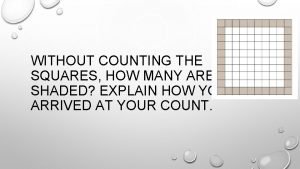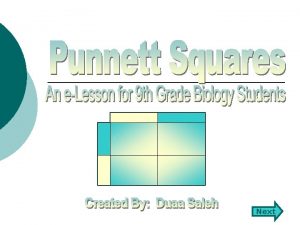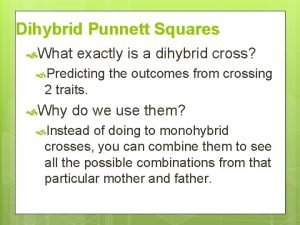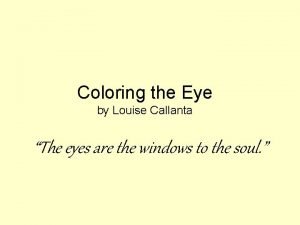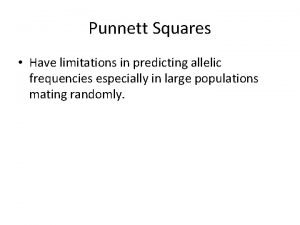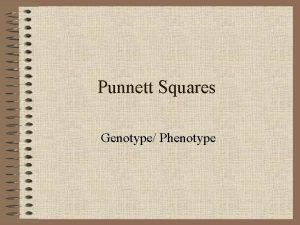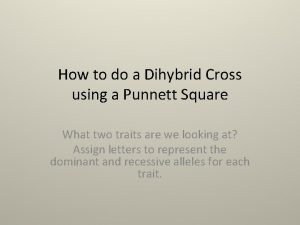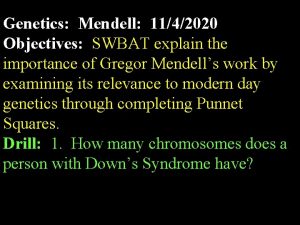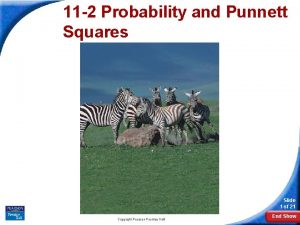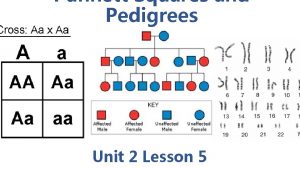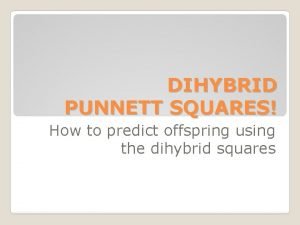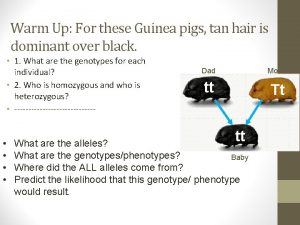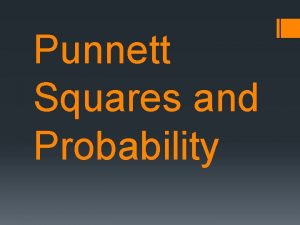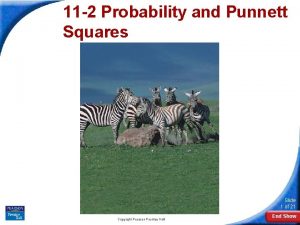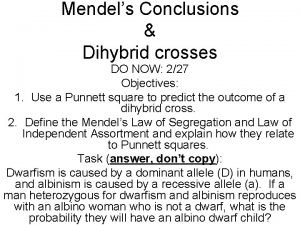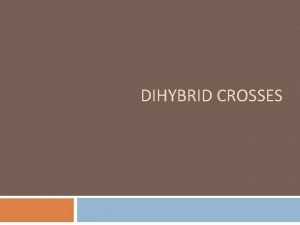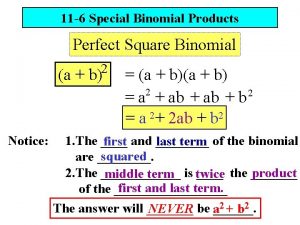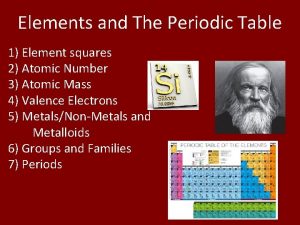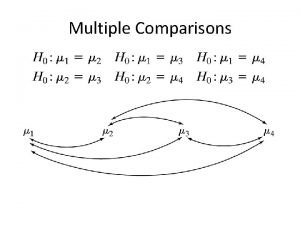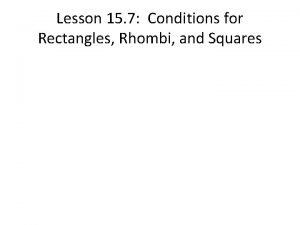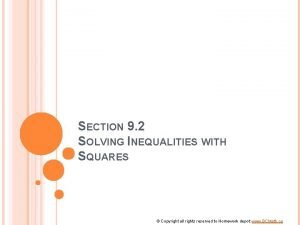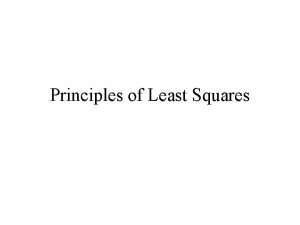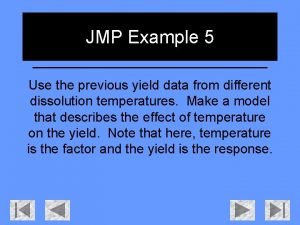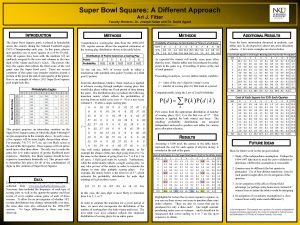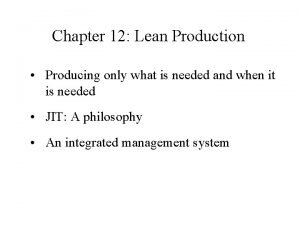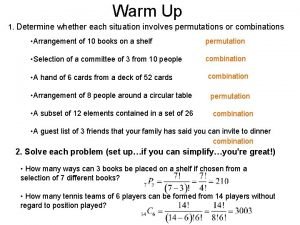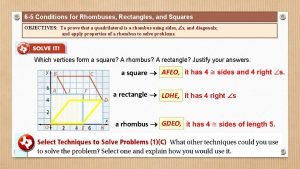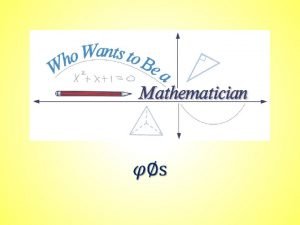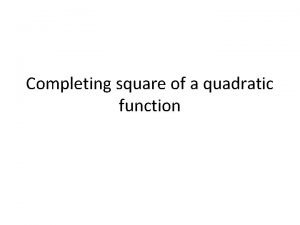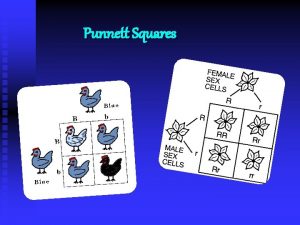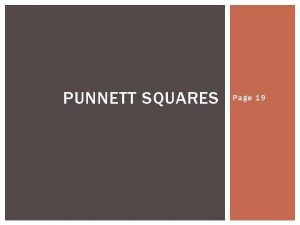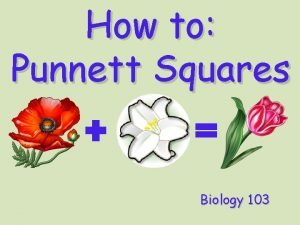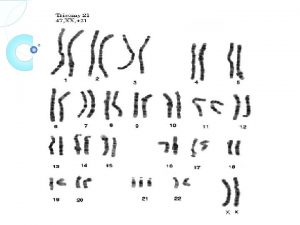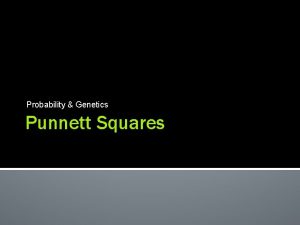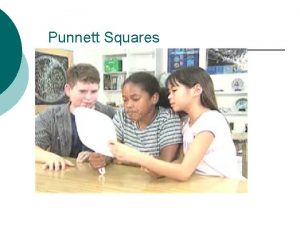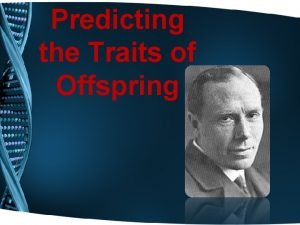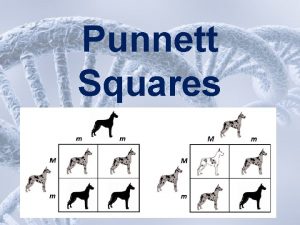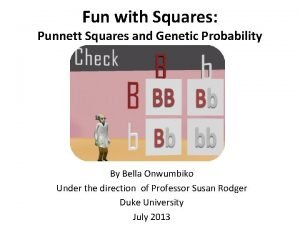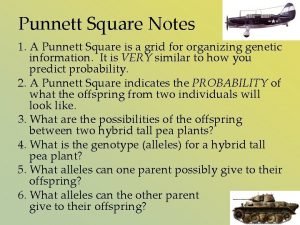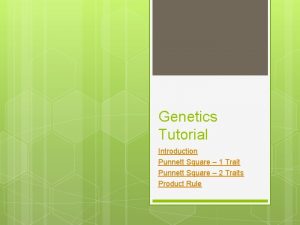Punnett Squares What are Punnett Squares Punnett squares











































- Slides: 43

Punnett Squares

What are Punnett Squares? Punnett squares are tools that help geneticists predict the possible outcomes of a genetic cross. In other words, they help us to predict what traits the offspring will have before they are born.

Remember Mendel’s Experiment? Let’s use Mendel’s experiment with pea plants to see how Punnett Squares can help us. Recall that Mendel started off with a purebred tall plant (TT) and a purebred short plant (tt).

How do you make a Punnett Square for the cross between these two plants? It’s easy! First, draw a square and divide it into four smaller squares.

Next, place the allele combination for one of the parents on top of the square. Be sure you center each allele over the smaller squares. T T

Now, place the allele combination for the other parent to the left of the Punnett square and center each allele with the smaller squares. T T t t

Move the alleles from the parent at the top to the four smaller squares below them. Put one allele in each small square. T T t t

Move the alleles from the parent at the top to the four smaller squares below them. Put one allele in each small square. T T t t T

Move the alleles from the parent at the top to the four smaller squares below them. Put one allele in each small square. T T t T

Move the alleles from the parent at the top to the four smaller squares below them. Put one allele in each small square. T T t T T

Move the alleles from the parent at the top to the four smaller squares below them. Put one allele in each small square. T T t T T

Move the alleles from the parent at the left to the four small squares. T T t T T

Move the alleles from the parent at the left to the four small squares. T T t Tt T T

Move the alleles from the parent at the left to the four small squares. T T t Tt Tt t T T

Move the alleles from the parent at the left to the four small squares. T T t Tt Tt T

Move the alleles from the parent at the left to the four small squares. T T t Tt Tt

Inside the four small squares you have the possible allele combinations for the offspring. T T t Tt Tt

Since there are four squares, there is a 25% chance that each combination will happen. T T t Tt Tt

In this example, there is a 100% probability that the off spring will have a Tt allele combination. T T t Tt Tt

That’s what happened with Mendel’s plants. He crossed the tall (TT) plant with the short (tt) plant and… T T t Tt Tt

…all of the offspring were tall (Tt). T T t Tt Tt

He then let the offspring selfpollinate, which means the parents both had the Tt allele combination. T t

Bringing the alleles down from the parent on top… T t

Bringing the alleles down from the parent on top… T t T T t

Bringing the alleles down from the parent on top… T t T

Bringing the alleles down from the parent on top… T t T t

Bringing the alleles down from the parent on top… T t T T t t t T

…and the alleles across from the parent on the left, … T t T T t t t T

…and the alleles across from the parent on the left, … T t T TT T t t T

…and the alleles across from the parent on the left, … T t T TT Tt t t T

…and the alleles across from the parent on the left, … T t T TT Tt t t Tt

…and the alleles across from the parent on the left, … T t T TT Tt t tt Tt

…you can see the offspring will have either the TT, Tt, or tt allele combination. Since TT and Tt will mean the plant will be tall and tt will mean the plant will be short… T t T TT Tt t tt Tt

…there is a 75% chance that the plant will be tall and a 25% chance the plant will be short. That’s what Mendel saw – 3 out of 4 tall & 1 out of 4 short. . T t T TT Tt t tt Tt

Any Questions ? ? ? ? ?

Codominance Sometimes alleles are neither dominant nor recessive. Codominant alleles cannot mask other alleles and they cannot be masked by other alleles. This means that they both “show up” in an organism when they are present.

Writing symbols for codominant alleles. With codominant alleles, you write the symbols a little differently. Use all capital letters with superscripts. The big letter represents the trait and the superscript letter describes the trait.

For example; if white fur and black fur are codominant, you would write the symbols like this – FB = Black Fur FW = White Fur F is the symbol for fur, B is the symbol for a black codominant allele, and W is the symbol for a white codominant allele. .

What about codominance and Punnett Squares? So, a cross between a black rat and a white rat would look like this, if black fur and white fur are codominant. F F W FF B B W F B B F F W B

Are you getting it? 1. 2. 3. Make Punnett Squares for the following codominant crosses: Black rat x black and white rat White rat x black and white rat Two black and white rats

Black Rat X Black & White Rat This would result in a 50% chance of having black offspring and 50% chance of having black and white offspring. F F B FF F W FF B B B F F B B W F F W B B

White Rat X Black & White Rat This would result in a 50% chance of having white offspring and 50% chance of having black and white offspring. F F B F F F W FF W W B W W F F W FF B W W

Black & White Rat X Black & White Rat This would result in a 25% chance of having black offspring, a 50% chance of having black and white offspring, and a 25% chance of having white B offspring. . F F W F F B FF B B W W F F W FF B W W
 Antigentest åre
Antigentest åre How many squares
How many squares Damien thiesson
Damien thiesson Haemophilia punnet square
Haemophilia punnet square X linked recessive punnett square
X linked recessive punnett square Punnet squares
Punnet squares Mendelian laws
Mendelian laws Dihybrid punnett squares
Dihybrid punnett squares Eye color punnett square hazel
Eye color punnett square hazel Punnett square limitations
Punnett square limitations Punnett square
Punnett square Foil method gametes
Foil method gametes Dominant and recessive punnett square
Dominant and recessive punnett square Tt x tt punnett square
Tt x tt punnett square 11-2 probability and punnett squares
11-2 probability and punnett squares Punnett square
Punnett square Genotypes punnett square
Genotypes punnett square How to foil punnett squares
How to foil punnett squares Pea plant punnett squares worksheet answer key
Pea plant punnett squares worksheet answer key Genetic square chart
Genetic square chart Linked genes punnett square
Linked genes punnett square 11-2 probability
11-2 probability Section 11-2 probability and punnett squares
Section 11-2 probability and punnett squares Conclusion of dihybrid cross
Conclusion of dihybrid cross Mendel dihybrid cross genotypic ratio
Mendel dihybrid cross genotypic ratio Binomial squared
Binomial squared Periodic table squares
Periodic table squares Sum of squares residual
Sum of squares residual Finding a perfect square
Finding a perfect square Anova table formulas
Anova table formulas Lesson 15-4 rectangles rhombuses and squares answers
Lesson 15-4 rectangles rhombuses and squares answers Inequalities with squares
Inequalities with squares Least square method in surveying
Least square method in surveying Fit least squares jmp
Fit least squares jmp Super bowl squares variations
Super bowl squares variations Kanban squares
Kanban squares Perfect squares between 100 and 200
Perfect squares between 100 and 200 A box contains 5 triangles 6 circles and 4 squares
A box contains 5 triangles 6 circles and 4 squares Kanban squares
Kanban squares Sum of squares decomposition
Sum of squares decomposition Conditions for rhombuses rectangles and squares
Conditions for rhombuses rectangles and squares Perfect squares 1-1000
Perfect squares 1-1000 6-5 rhombi and squares
6-5 rhombi and squares Complete a square formula
Complete a square formula

